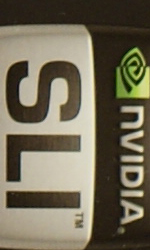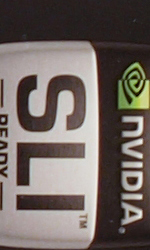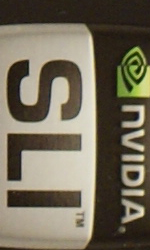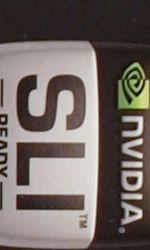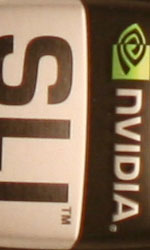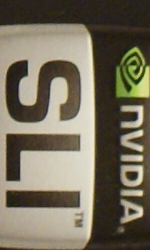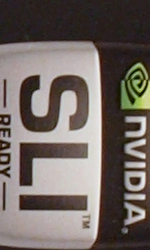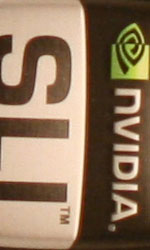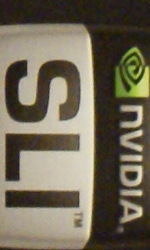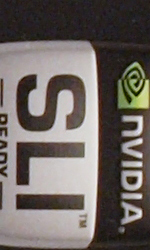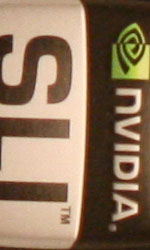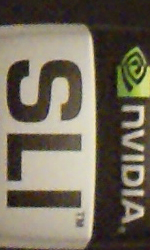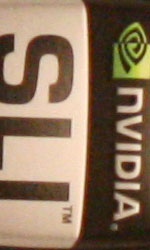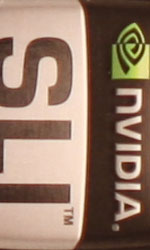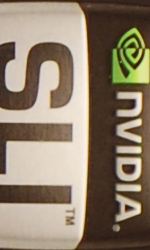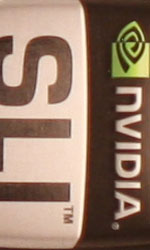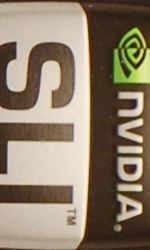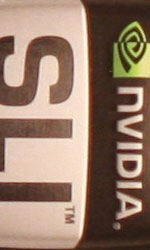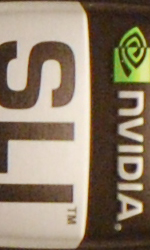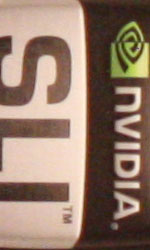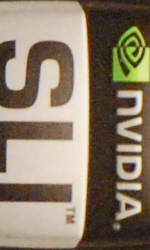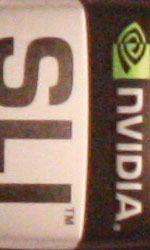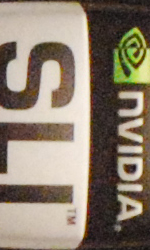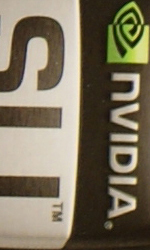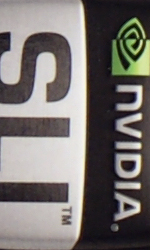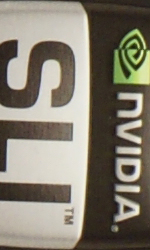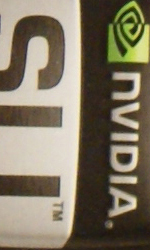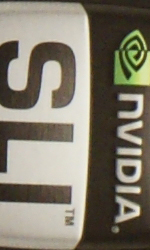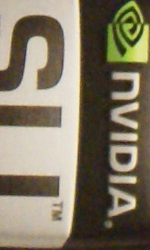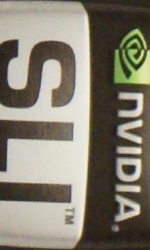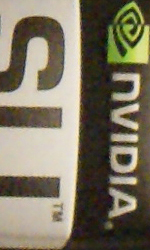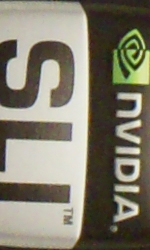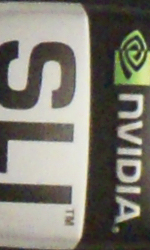
Original Link: https://www.anandtech.com/show/2644
Sony A200: Entry DSLR Roundup
by Wesley Fink on October 20, 2008 1:00 AM EST- Posted in
- Digital Camera
With all the press and excitement in the past few weeks over $3000 full-frame Digital SLR cameras, it is easy to forget that many buyers are looking for the absolute best "bang-for-the-buck" in a camera. There is little doubt that you will find that best value today in interchangeable lens DSLRs that now offer almost all of today's checklist features starting at a $499 street price.
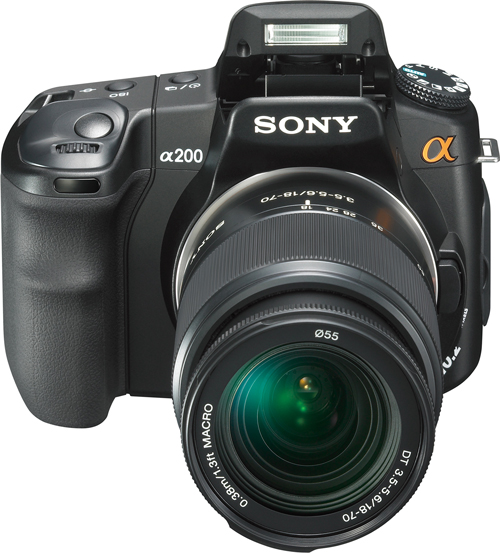
So what do you get for your $500 these days? To answer that question we took a closer look at Sony's lowest-priced DSLR. The Sony A200 sells complete with a Sony 18-70mm (27 to 105mm equivalent) lens for just $499 - sometimes even less. The A200 also features body-integral image stabilization, which means the IS will work with any lens you mount. Sony does not include Live View in the A200, choosing instead to feature Live View only on the A300/A350, which use a uniquely easy to use and useful Live View compared to competing models.
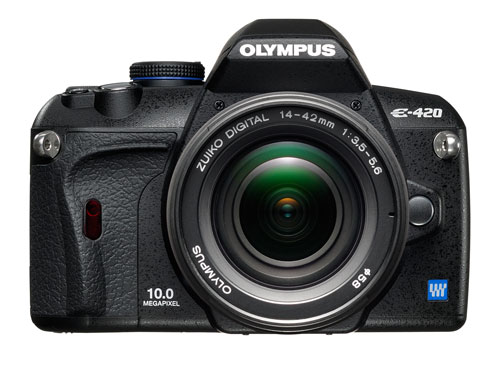
The only competition in the $500 arena is the Olympus E420 which sells for around $530 with the 14-42mm (28-84mm equivalent), and the recently reduced Canon XS with a current street price of around $525 with an Optical IS 18-55mm lens. The E420 is the smallest mirror DSLR on the market. However, it is now the only camera in its class to not offer some form of IS - either in the camera body or by including a kit lens with IS or VR built-in. You will have to move up to the E520 at $100 more for IS in the body. The E420 does feature Live View, a feature pioneered by Olympus, including both phase-detect and contrast-detect options. The Canon XS also includes both Live View options.

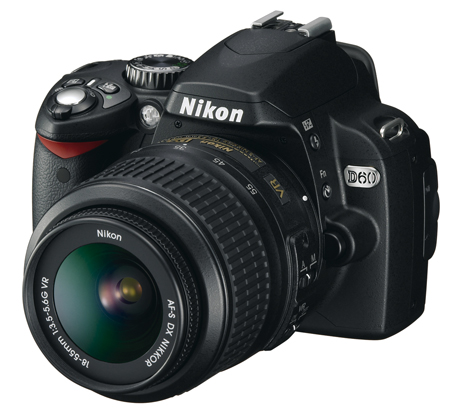
The DSLR "entry" market also includes the next rung at a $599 street price with lens. This adds the Nikon D60, Olympus E520, Pentax K200D, and Sony A300. All five sell for a street price of $599 with an 18-55mm or equivalent kit lens (18-70mm for the A300). The Pentax, Olympus, and Sony feature body-integral IS that works with any lens and the Canon and Nikon kits include a stabilized kit lens, but still require IS or VR lenses for the IS feature.
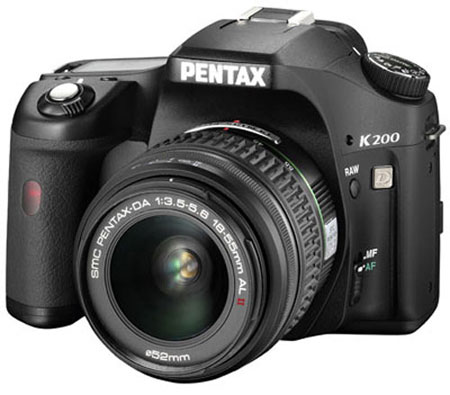
Clearly this has become a very crowded market segment, which is great news for buyers. In the $499 to $599 price range you now have a choice of no less than seven models from the top five DSLR manufacturers. With such a wide selection there are a lot of models competing for your attention and that can lead to even better prices. Today we will take a closer look at the Sony A200, which is arguably the lowest priced "full-featured" DSLR you can buy today. Does this price-leader also bring true value to the DSLR market?
New Features, Improvements, and Omissions
The Sony A200 certainly epitomizes the fast pace of innovation in the DSLR market. When the Sony A100 was introduced it was the first of the 10MP DSLR cameras, and it was considered a breakthrough value at a price of just $999 with a kit lens. Now, just two years later the Sony A200 generally updates the A100 and cuts the price in half.
| Sony Camera Comparison | ||
| Sony A200 | Sony A100 | |
| LCD Screen | 2.7" Fixed | 2.5" Fixed |
| Sensor | 10.2 MP CCD | 10.2 MP CCD |
| AF Points | 9 | 9 |
| Sensor Size | 23.6x15.8mm | 23.6x15.8mm |
| Sensor Multiplier | 1.5x | 1.5x |
| Image Processor | BIONZ | BIONZ |
| Image Stabilization | Body Integral (All lenses) | Body Integral (All lenses) |
| Auto Sensor Clean | Yes | Yes |
| Live View | None | None |
| Metering Modes | Multi-Segment, CWt, Spot | Multi-Segment, CWt, Spot |
| ISO Range | 100-3200 | 100-1600 |
| Auto ISO Adjust | Yes | Yes |
| Continuous Speed | 3 fps | 3 fps |
| Wireless Flash Control with Built-in Flash | Yes | Yes |
| Remote Release | Wireless Remote, Cable | Wireless Remote, Cable |
| Storage | CF | CF |
| Viewfinder | .83x, 95% | .83x, 95% |
| Battery | NP-FM500H 1600mAh | NP-FM500H 1680mAh |
| Battery Life (50% Flash) | 750 | 730 |
| Battery Grip | VG-B30AM, Optional | No |
| Size | 131x98.5x71mm | 133x95x71mm |
| Weight (with Battery) | 1.39 lb. (626g) | 1.4 lb. (638g) |
| Kit Lens | 18-70mm f3.5-5.6 (28-105mm) | 18-70mm f3.5-5.6 (28-105mm) |
| Price with Kit Lens | $499 | $999 |
Normally a 50% price cut on a new model means reducing features. However, the A200 generally retains the same features as the well-regarded A100 while improving the camera in several areas. The LCD is now 2.7", up from 2.5" in the A100. While the sensor is the same resolution as the A100, the 10.2MP sensor now supports ISO 3200, up from the ISO1600 max of the A100. High ISO noise reduction is now adjustable on the A200.

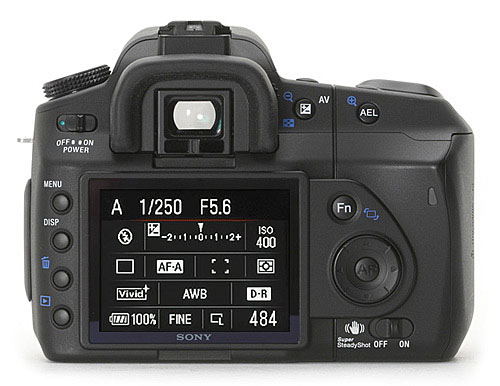
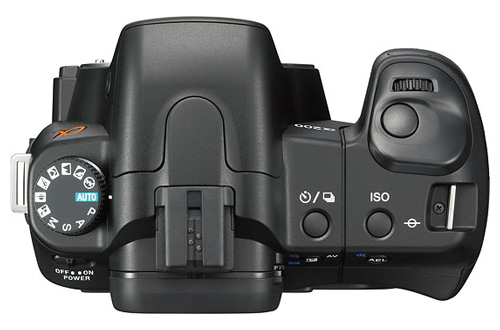
Sony adds a 16:9 HDTV shooting mode to the A200, and image quality adjustments - contrast, saturation, sharpness - have wider adjustment ranges on the A200 than the A100. Super Steady Shot is also said to be improved on the A200. The only major omission sacrificed to the price reduction appears to be the depth-of-field preview button now absent on the A200.

The Sony A100 was criticized by many for not offering a battery grip option for extended battery life and better portrait handling. The A200 corrects that by supporting the Sony VG-B30AM battery grip that is also compatible with the Sony A300 and A350.
Sony has also continued some features you certainly don't expect to find in an entry-level DSLR. Most significant of these is the continued support for Wireless Flash capabilities that can be controlled by the built-in flash on the A200. Another is the 9-point AF module, which stands out in a class where some competitors try to get by with 3-point AF. The Sony A200 also continues real spot metering and adjustable bracketing, which are features some competitors have dropped to differentiate their higher-cost models.
Sony A200 Full Specifications
Weights and Measurements
- Dimensions (Approx.): (WHD) 5 3/16" x 3 7/8" x 2 13/16" (130.8 x 98.5 x 71.3 mm)
- Weight (Approx.): 1 lb. 2.8 oz (532g) body, not including battery, lens and media
Convenience
- Burst Mode: Up to 3FPS; Unlimited to capacity of media (JPEG L/M/S); Maximum 3 frames (RAW + JPEG); Maximum 6 frames (RAW)
- Color Mode(s): Standard, Vivid, Portrait, Landscape, Night view, Sunset, Black and White, Adobe RGB (Except for Adobe RGB, all other color modes use the sRGB color space)
- Red-Eye Reduction: On/Off (all modes)
- Self Timer: Yes (10 seconds, 2 seconds, Off)
- White Balance: Auto plus 8 Modes (Daylight, Shade, Cloudy, Tungsten, Fluorescent, Flash, Color Temperature/Color filter, Custom), each with +/-3 adjustable step
Hardware
- LCD: 2.7" TFT (230k pixels) LCD with Clear Photo design
- Microphone: N/A
- Viewfinder: Optical: TTL, 0.83x magnification with 50mm lens at infinity; 95% coverage
Power
- Battery Capacity: 7.2V, 1600 mAh; CIPA standard: approx. 750 pictures
- Battery Type: NP-FM500H Lithium-ion rechargeable battery
General
- Imaging Device: 10.2 (effective) APS CCD Sensor; 23.6 x 15.8 mm; RGB primary color filter
- Megapixel: 10.2MP
Convenience Features
- AF Illuminator Light: Yes, On/Off Select
- Clear RAW NR: N/A
- Histogram Display: Yes - RGB, playback only
- Movie Mode(s): N/A
- Multi-Pattern Measuring: 40 Segment, Center Weighted, Spot
- Scene Mode(s): Portrait, Landscape, Sunset, Night View/Night Portrait
Processor
- BIONZ Engine: Yes (LSI with Dynamic Range Optimizer (DRO/DRO+))
Optics/Lens
- EV Compensation: ±2.0 EV, 1/3 EV Steps
- Exposure: Program Shift: Yes, Command Dial
- Focus: Auto Focus: TTL Phase Detection, Multi-point: 9 Area, 8 Line, 1 Cross Sensor, Auto Focus Mode: Yes, Adjustable Spot AF: Selectable Sensor, Visual Focus Confirm: Direct via Spherical Acute Matte Screen
- ISO: Auto/100/200/400/800/1600/3200
- Lens Type: Interchangeable A-mount
- Shutter Speed: 30 < 1/4000 sec 52 step, Bulb
Software
- Operating System Compatibility: Microsoft Windows 2000 Professional, ME, XP Home and Professional; Macintosh OS X v10.3 or later (OS must be installed at the factory)
- Supplied Software: Image Data Converter SR ver.2.0, Image Data Lightbox SR ver.1.0, (all Windows and Macintosh), Picture Motion Browser Ver.2.1.02 (Windows only)
Operating Conditions
- Flash Effective Range: GN12 at ISO 100 (39 feet/ 12 meters)
- Flash Mode(s): Built-in Auto Pop-up: Auto, Fill-flash, Rear flash sync, Slow Sync, High Speed Sync, Wireless off camera flash (with Flash HVL-F56AM, F36AM)
Inputs and Outputs
- Output(s): Video: Yes, NTSC/PAL Selectable
- USB Port(s): Yes, Supports USB 2.0 Hi-speed
Service and Warranty Information
- Limited Warranty Term: 1 Year Parts and Labor
Accessories Supplied
- DT 18-70mm f3.5 Zoom lens (27 - 105 35mm equivalent), 75-300mm f/4.5-5.6 Compact Super Telephoto Zoom
- NP-FM500H rechargeable battery
- BC-VM10 battery charger
- Video and USB cables
- Shoulder strap with eyepiece cap and Remote Commander clip
- Body cap
- Software/USB Driver CD-ROM
Sony A200 Features
The Sony press materials do a good job of describing the A200 features if you can wade through the superlatives that are typical of any manufacturers' marketing speak. The features list highlights the same features we would emphasize in our description. The Field Notes on page 6 provide the assessment of how useful the features actually proved to be in real world shooting.
The Sony α (alpha) DSLR-A200 camera is perfectly positioned to carry a new generation of family photographers into the creative world of DSLR performance - including superb 10.2MP imaging, high-sensitivity shooting, and Super SteadyShot in-camera IS that reduces blur with a brilliant array of Sony, Carl Zeiss and Minolta a-mount lenses. It's also fast, lightweight and incredibly easy to operate, with a large 2.7" LCD screen, simple Function Guide menu display and Creative Style settings to fine-tune camera performance - plus a powerful Bionz processing engine that speeds camera response.
10.2MP Super HAD CCD
Superb image quality gives you great DSLR shots right from the start, with a large APS-size CCD imager developed by Sony to expand dynamic range, minimize noise more effectively and provide greater detail for making big prints or cropping in tight on your subject.
Expanded ISO Sensitivity
Broad sensitivity range from ISO 100 to ISO 3200 enables the α (alpha) DSLRA200 to capture beautiful color images even in very dim light - with High ISO Noise Reduction technology that reduces picture noise artifacts at high sensitivity ISO 1600 and ISO 3200 settings by eliminating noise from RAW data after analog-to-digital conversion.
Super SteadyShot in-camera Image Stabilization
A high-performance sensor detects vibrations and the IS system automatically compensates. Because IS is built into the α (alpha) DSLR-A200, every lens benefits - and with an advantage of from 2.5 to 3.5 stops, you can shoot effectively at higher shutter speeds even in very low light with minimum blur from shaky hands or fast-moving subjects.
Bionz Image Processor
The "brain" of the α (alpha) DSLR-A200 is the advanced Sony Bionz Image Processor, using hardware-based Large Scale Integrated (LSI) circuitry to enhance images with rich tonal reproduction, improved white balance and exposure control, and expanded DRange Optimizer capabilities. With 2-channel data transfer from CCD to processor, your camera can also respond faster.
Dynamic Range Optimizer
To improve results with backlit subjects and recover details hidden in shadows or lost in glare, the α (alpha) DSLR-A200 provides Dynamic Range Optimizer at two levels: Normal DRO, to improve detail using standard gamma curves for fast shot-to-shot response time, or Advanced DRO, to adjust dynamic range area-by-area for the greatest precision.
Anti-Dust Technology
Changing lenses in a DSLR can allow dust to enter the camera - so to keep the CCD imager cleaner for better pictures, the α (alpha) DSLR-A200 utilizes both static-free anti-dust coating on the CCD filter and anti-dust vibration that automatically shakes the CCD to dislodge dust each time the camera is shut off.
Auto Pop-Up Flash
In Auto or some scene selection modes, the camera flash automatically pops up and fires when needed to help you shoot more effectively. Flash is cancelled in Landscape, Sport or Sunset modes and in "Flash Off" position on the Exposure Mode dial.
Eye-Start Autofocus System
It begins precision autofocus adjustments the moment you raise the camera to your eye - so unlike some DSLR cameras that don't start focusing until the shutter button is half-pressed, the Sony α (alpha) DSLR-A200 never slows down your ability to catch fast action.
9-Point Center Cross AF Sensor
A fast focus motor and improved focus control help bring images into sharp definition more quickly, with predictive focus control that automatically calculates the position of a fast-moving subject.
Flexible, Accurate Exposure Control
A 40-segment honeycomb sensing system provides multi-pattern measuring for superior exposure control accuracy - and you can also select center-weighted or spot metering modes. You'll also have six preset White Balance control settings and RGB Histogram display to check color balance.
Scene Selection Modes
Along with auto exposure, the α (alpha) DSLR-A200 gives you scene selection modes to optimize camera performance for Portrait, Landscape, Macro, Sports, Sunset and Night Portrait/Night View situations.
Creative Style Settings
To express your creativity and personal taste, you can adjust contrast, saturation and sharpness settings for any of eight finishing styles - including Standard, Vivid, Portrait, Landscape, Night View, Sunset, B&W and Adobe RGB modes.
2.7" Clear Photo LCD Screen
A large built-in screen with anti-reflective coating makes it easy to read camera setup menus even in bright sunlight and improves image quality when you check your shots.
Additional Features
Index and Slide Show Display
Function Guide Display
Continuous Burst Mode at 3 Frames Per Second
Stamina Battery Power
High-Capacity Media Options
Advanced Lenses and Accessories
Sony A200 Competition
With the recent street price declines in the Canon XS, the $500 entry segment has grown by one. Three DSLR cameras in the market now sell for around $500 with a kit lens. How does the A200 compare to the Olympus E-420 and the Canon XS?
All three cameras are based on a 10MP sensor. The Olympus E420 is the smallest DSLR you can buy but it does not feature any kind of IS. The A200 features in-body stabilization that works with any lens to improve hand-held shooting 1-4 stops in low light. The Canon XS kit lens has Optical Stabilization, but you must buy additional IS lenses if you want that feature.
The Sony A200 has the widest ISO range of the group, as it is the only entry in its class that extends to ISO 3200. However, if Live View is important to you, you will not find it on the Sony A200 as you will need to step up to the $599 Sony A300 for Live View. The Canon XS and Olympus E420 both feature Live View, but it is the slow "grafted on" variety, where the Sony A300/A350 actually have a useful Live View with a tilt-screen and fast AF.
| Camera Comparison - Sony A200 vs. Competition | |||
| Sony A200 | Canon XS EOS 1000D |
Olympus E420 | |
| LCD Screen | 2.7" Fixed | 2.5" Fixed | 2.7" Fixed |
| Sensor | 10.2 MP CCD | 10.1 MP CMOS | 10.0 MP NMOS |
| AF Points | 9 | 7 | 3 (11 in Live View) |
| Sensor Size | 23.6x15.8mm | 22.2x14.8mm | 18.0x13.5mm |
| Sensor Multiplier | 1.5x | 1.6x | 2X (Four-Thirds) |
| Image Processor | BIONZ | DIGIC III | TRUEPIC III |
| Image Stabilization | Body Integral (All lenses) |
IS Lens Only | None |
| Auto Sensor Clean | Yes | Yes | Yes |
| Live View | None | Contrast & Phase Detect | Contrast with Face Detection & Phase Detect |
| Metering Modes | Multi-Segment, CWt, Spot | Evaluative, CWt, Partial | ESP Multi, CWt, Spot, Highlight Spot, Shadow Spot |
| ISO Range | 100-3200 | 100-1600 | 100-1600 |
| Auto ISO Adjust | Yes | Yes (Auto Fixed ISO 100-800) | Yes |
| Continuous Speed | 3 fps | 3 fps | 3.5 fps |
| Wireless Flash Control with Built-in Flash | Yes | No | Yes |
| Remote Release | Wireless Remote, Cable | Cable | Wireless Remote, Cable |
| Storage | CF | SD/SDHC | CF |
| Viewfinder | .83x, 95% | .81x, 95% | .92x, 95% |
| Battery | NP-FM500H (1600mAh) | LP-E5 (1080mAh) | BLS-1 (1150mAh) |
| Battery Life (50% Flash) | 750 | 500 (190 Live View) | 500 (Less in Live View) |
| Battery Grip | VG-B30AM, Optional | BG-E5, Optional | No |
| Size | 131x98.5x71mm | 126x98x65mm | 130x91x53mm |
| Weight (with Battery) | 1.39 lb. (626g) | 1.16 lb. (502g) | 15.5 ounces (440g) |
| Kit Lens | 18-70mm f3.5-5.6 (27-105mm) |
18-55mm f3.5-5.6 IS (29-88mm) |
14-42mm f3.5-5.6 (28-84mm) |
| Price with Kit Lens | $499 | $525 | $530 |
| Camera Comparison - Sony A200 vs. Competition (Cont'd) | ||||
| Olympus E520 | Nikon D60 | Sony A300 | Pentax K200D | |
| LCD Screen | 2.7" Fixed | 2.5" Fixed | 2.7" Tilt | 2.7" Fixed |
| Sensor | 10.1 MP Live MOS | 10.2 MP CCD | 10.2 MP CCD | 10.2 MP CCD |
| AF Points | 3 (11 in Live View) | 3 | 9 | 11 |
| Sensor Size | 17.3x13.0mm | 23.6x15.8mm | 23.6x15.8mm | 23.5x15.7mm |
| Sensor Multiplier | 2X (Four-Thirds) | 1.5x | 1.5x | 1.5x |
| Image Processor | TRUEPIC III | EXSPEED | BIONZ | PRIME |
| Image Stabilization | Body Integral (All lenses) |
VR Lens Only | Body Integral (All lenses) |
Body Integral (All lenses) |
| Auto Sensor Clean | Yes | Yes | Yes | Yes |
| Live View | Contrast with Face Detection & Phase Detect | no | Full-Time by Mirror Selection | no |
| Metering Modes | ESP Multi, CWt, Spot, Highlight Spot, Shadow Spot | 3D Matrix, CWt, Spot | Multi-Segment, CWt, Spot | Multi-Segment, CWt, Spot |
| ISO Range | 100-1600 | 100-3200 | 100-3200 | 100-1600 |
| Auto ISO Adjust | Yes | Yes | Yes | Yes |
| Continuous Speed | 3.5 fps | 3 fps | 3 fps | 3 fps |
| Wireless Flash Control with Built-in Flash | Yes | No | Yes | Yes |
| Remote Release | Wireless Remote, Cable | Wireless Remote, Cable | Wireless Remote, Cable | Wireless Remote, Cable |
| Storage | CF | SD/SDHC | CF | SD/SDHC |
| Viewfinder | .92x, 95% | .80x, 95% | .74x, 95% | .85x, 96% |
| Battery | BLM-1 (1500mAh) | EN-EL9 (1000mAh) | NP-FM500H (1600mAh) | Four AA Batteries |
| Battery Life (50% Flash) | 650 | 730 | 730 | 500 |
| Battery Grip | No | No | VG-B30AM, Optional | BG3, Optional |
| Size | 136x91.5x68mm | 126x94x64mm | 131x99x75mm | 134x95x74mm |
| Weight (with Battery and Card) | 1.05 lb. (476g) | 1.22 lb. (553g) | 1.49 lb. (676g) | 1.52 lb. (689g) |
| Kit Lens | 14-42mm f3.5-5.6 (28-84mm) |
18-55mm f3.5-5.6 VR (27-83mm) |
18-70mm f3.5-5.6 (27-105mm) |
18-55mm f3.5-5.6 (27-83mm) |
| Street Price with Kit Lens | $599 | $599 | $599 | $599 |
The balance of the entry class sells for a street price about 20% higher than the A200, and adds the Olympus E-520 (E420 with body IS), Nikon D60, Pentax K200D, and Sony's own A300. The Sony models, Canon XS, and Pentax all have more advanced AF modules, as the Nikon and Olympus models have just 3 AF points. The Nikon, like the Canon XS, ships with an Optical Stabilized kit lens featuring Nikon VR, but IS is only available if the lens features it. All the other competitors have body-integral IS that works with almost any lens you can mount.
The Nikon D60 and Pentax K200D, like the Sony A200, do not feature Live View. The Olympus E520 and Sony A300 do feature Live View, but the $599 Sony A300 features the most useful Live View we have used in a tilt 2.7" screen - none of the other competitors has a tilt screen. The A200 has a brighter, larger, and easier to use viewfinder than the A300 - so you get truly useful real-time Live View on the A300, but with compromised frame coverage and a tunnel-like viewfinder.
The Sony 18-70mm kit lens also covers a wider zoom range at a 27-105mm equivalent than any of its competitors, which generally feature an 18-55mm kit zoom. This will be important to some potential buyers. The Nikon D60, which also features a Sony CCD sensor similar to the A200/A300/A350, is the only model to offer ISO choices to 3200 like the Sony entry models.
A pop-up flash is something most buyers expect in an entry DSLR and take for granted. However, not all entry flash is equal as you will see in the comparison charts above. Nikon and Sony both support a very good wireless flash system that can normally be controlled by the pop-up flash. As you can see, Canon does not have such a wireless flash system. However, many potential buyers do not realize that Nikon does not support their Creative Lighting System with the pop-up flash on the D60. This makes the Sony A200 a better choice than Canon or Nikon if wireless flash is a feature that matters to you. Wireless flash is also supported, in slightly different capabilities, by the Pentax and Olympus entry models.
Sony and Olympus are the only ones to offer two models in this entry DSLR class. The only real difference in the Olympus E420 to the E520 is the addition of in-body IS and a larger hand grip to the E520. For the Sony A200 and A350 the differences are huge and reflect solutions aimed at very different market segments. While they are based on the same 10.2MP sensor, the A200 is an updated half-price A100. It is a very capable camera that will appeal to serious amateurs looking for as many shooting options as possible at the lowest cost.
The Sony A300 is the ultimate Live View camera that makes no apologies for compromising the viewfinder and LCD frame coverage to provide what is arguably the best and easiest to use Live View in the market. If you want an even higher-res sensor with tilt-screen Live View you can move up from the 10.2MP A300 to the 14.2MP A350 for $200 more, which is a street price of $799 with a kit lens. This, however, is 60% more than the Sony A200, which is a different price class that includes several other midrange models.
Field Notes
In our review of the Sony A350 we complained about the optical viewfinder just about as much as we praised the Live View tilt LCD. The Sony A100 had one of the better APS-C viewfinders, so the "tunnel-vision" A350/A300 viewfinder was quite a disappointment by comparison. It was clear Sony had to make compromises in the optical viewfinder to accommodate the Penta-Mirror shift and dedicated Live View sensor used in the A350/A300.
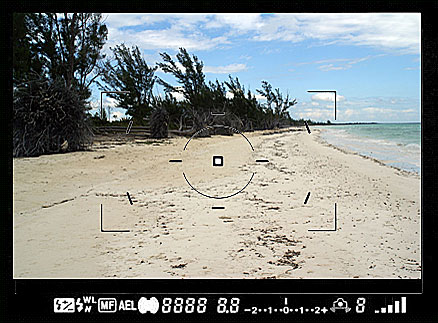
The A200 returns us to the big bright viewfinder of the A100. In fact, to our eyes the viewfinder appears unchanged from the A100 model, which is certainly a good thing. You also get a higher image magnification and a greater percentage of the total frame in the A200 viewfinder and on the LCD than you do on the A350/A300. This gives buyers a real choice. Traditionalists will prefer the A200 viewfinder, which is at least as good as anything in its class. Those who want a fast working Live View camera can choose the A350/A300, but users cannot get both a great optical viewfinder and great Live View in any current Sony camera.
Frankly, most of the competition's Live View implementations are slow as molasses and are not even close to the Sony A350/A300. However, they can be useful in non-action shooting situations or in the studio where the image magnification on the LCD can be very helpful for some critical focusing situations. Of course, who buys an entry DSLR for their studio? Today's Live View is more a checklist feature than a truly useful feature on entry cameras except the Sony A350/A300.

Image Stabilization and Auto Sensor-Cleaning Minolta was first with body-integral image stabilization and Sony has further refined a feature that most everyone but Canon and Nikon have adopted. It works very well on the A200 with up to 2 to 3 stops of added handheld capability. The Sony A200 IS works with any lens you can mount to the camera, and this includes current Sony lenses as well as millions of Minolta AF lenses that are often quite reasonable on the used market and on eBay. That same body IS also allows automatic sensor cleaning, which seemed to work well in under a wide variety of conditions. Our test cycle was just a few weeks but dust was never a problem with the A200 even though we used a wide variety of lenses in our testing.
Auto Focus In addition to more focus points and better focus tracking than many of their competitors, Sony claims the A200 Auto Focus is 1.7X faster than the A100. This is due to a higher torque motor and AF improvements borrowed from the newer A700. The AF module itself appears the same as the A100, but the AF speed in a side-by-side with the A100 found the A200 quite a bit faster in focusing. The A200 is not A700 fast, but the A700 is one of the fastest available in its class. However, compared to other entry models the A200 is one of the fastest focusing models.
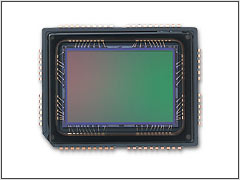
Image Quality The Sony sensor is one of those components that promises more than expected if compared on price alone. The Sony 10.2MP CCD is a mature sensor that has been on the market for about two years. It is revised, refined, and coupled with a fast, recent Bionz processor in the A200. As a result, the A200 has a wider ISO range than others in the $499 price class. If you move up a notch to the $599 class the A200 still holds its own in image quality against any competitor. Image quality of the A200 is excellent, consistent, and dependable - which is a nice combination in an entry DSLR.
Controls The A200 is a model of simplicity in controls, but that should not be misread as lacking adjustment control. There is only one dial, where you select the all-auto mode, Program, Aperture-Priority, etc. and the Scene Modes.

In Program mode there is a shift feature that is easy to use to control exposure. Turning the single front dial maintains the auto exposure but shifts the shutter speed (and corresponding aperture) to give more exposure choices. The single command dial is a concession to entry level, as was the single dial on the A100. The A700 has two dials with the front shifting shutter and the rear aperture in program shift. However, you can choose to have aperture instead of shutter as the shift parameter in the A200 menus.
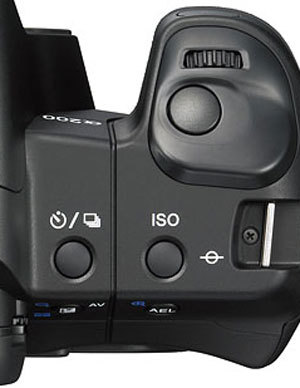
The top right features buttons for instant selection of ISO and Drive mode. The values are displayed on the rear LCD and can be adjusted with the joy-pad.
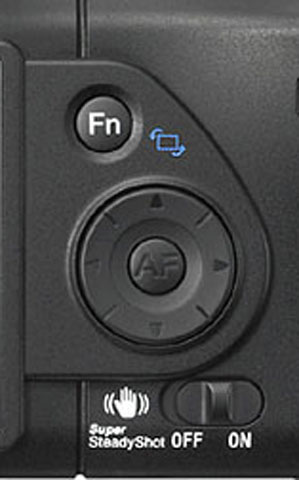
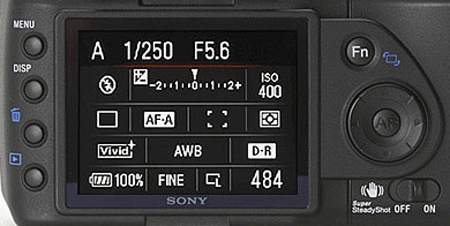
One of the nicest features of Sony DSLRs is the Fn button to the right of the LCD. This button brings up the Fn screen which allows adjustment of all the major parameters of the camera in one convenient place. Recent models from other manufacturers are featuring a similar feature, with the Canon 50D the most notable convert to the menu-less one screen adjustment summary.
DRO (Dynamic Range Optimizer) The Sony A200 is not a stripped entry model as many of its competitors are. The best example of this is the fact that Sony includes their DRO feature in the A200, which allows dynamic range expansion in captured images. It is even adjustable in the A200. This is certainly not a feature you would normally expect to find in an entry DSLR.
Ease of Use Sony has earned a deserved reputation in the DSLR market for simplicity or ease-of-use. We suspect this is more the result of the influence of Minolta engineers than Sony designers since the Sony point-and-shoots are often extremely complex and unintuitive. We do hope that Sony DSLR ease-of-use continues in the future.
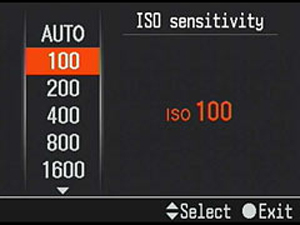
Auto ISO is another Sony feature that is very useful. In Auto ISO the camera selects the ISO to keep the exposure in a range that will likely produce sharp pictures. The Auto range is optimized and varies depending on the shooting mode selected or the Scene selection. Unlike some competitors, Sony has not really crippled the A200 or removed features to match a lower price point. All of the A100 features and options are continued or expanded in the A200 except for the Depth-of-Field preview button on the front, which was a victim of cost-cutting. But the ISO range is wider and the operation is even faster than the well-respected A100.
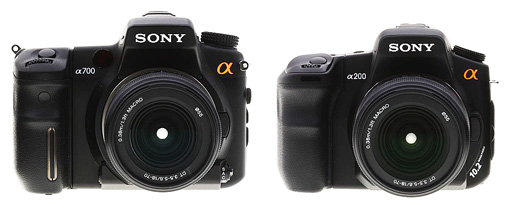
Handling The A200 is certainly smaller than the prosumer A700, but it is still larger than the similarly priced Nikon D60 and Canon XS entry models. Weight, however, is similar to these two competitors. Frankly, some have real issues with the small size of the D60 and Canon XS and prefer the Canon handling with the optional battery grip. Of course, the Nikon does not offer an optional battery grip so the D60 can't grow for better handling.
The A200 is a bit larger than the Canon and Nikon entry and fits larger hands better. If you find the XS/XSi and D60 too small for your liking, you will like the Sony A200 handling. Sony also makes an optional Battery Grip for the A200, and it is the same grip that fits the A300/A350. The A100 did not have a grip option.
Overall the ergonomics of the A200 seem to be right on target. It is easy to hold and operate and it is a further refinement of the A100 it replaces. If size is your main concern, however, the Canon, Nikon, and Olympus entry models are even smaller, though some complain they are too small for a DSLR and hamper ease-of-use.
Customization The A200 is one entry model that certainly does not look or behave like one. The only hints that this is not a midrange model are the lack of a depth-of-field preview button and just one command dial. However, features and options are otherwise what you would expect on a much more expensive camera. Bracketing control is present and not missing like the Nikon D60. Wireless flash control is present, unlike the Nikon D60 or the Canon XS, as is body image stabilization, unlike the Olympus E420.
As already pointed out Live View is not an A200 feature. If that matters to you move up to the A300 at $599. The A300 uses the same sensor as the A200 and features a real fast focus tilt LCS for Live View. If the real usefulness of the Live View is not so important you could select one of the A200 competitors in the entry class, all of which feature slow Live View as a feature for sometimes use.
Sony A200 vs. Canon XS vs. Olympus E420/E520
All crops are 150x250 pixels, and images were captured at f4, manually focused, on a tripod at the same position. Color balance in all cases was manually set to Tungsten as all images were illuminated with a single tungsten 100W bulb high to the right side of the image. All three entry models are based on a 10MP sensor.
The Olympus E420/E520 uses a smaller 2X multiplier instead of the 1.5X of the Sony A200 and 1.6X of the Canon XS. Therefore a 50mm lens was used for capturing the Canon XS and Sony A200 images and a 35mm Macro lens was used to capture the Olympus images. This was to allow the full-size images, which you can see by clicking on any crop, to represent the same field of view regardless of the multiplier used by the crop-sensor DSLR.
It should be apparent that all three entry cameras at ISO 800 are all but equivalent in image noise. However, as we move to ISO 1600, which is the highest value available with Canon XS and Olympus E520, the XS and A200 are very similar in noise but the Olympus E520 is a bit noisier. This is most likely due to the slightly smaller sensor used in Four-Thirds cameras. The A200 is the only model in this class to offer an ISO 3200 option. At ISO 3200 the A200 noise is apparent and it is noisier than the Olympus ISO 1600 option. You will likely find ISO 3200 useful in a pinch or when a small print is all that is required, but these actual pixel crops show the ISO 3200 would not be useful for large prints.
Color balance is something we have complained about on Canon before. All cameras were set to the Tungsten preset, but the Canon idea of Tungsten is very warm under our 100W tungsten light source. The Sony is slightly warm but close to accurate and many will find the Olympus the most accurate color balance at the Tungsten setting. In our estimation either the Sony or Olympus colors are fine but the Canon would require custom adjustment under this light source for more accurate color rendition.
Sony A200 vs. Nikon D60 vs. Canon 40D
It is widely known that the Nikon D60 utilizes the same Sony 10.2MP CCD sensor used in the Sony A200/A300 and the Pentax K200D. Any differences you might find between image quality of the A200 and D60 will therefore reflect the differences in processing electronics employed by each camera maker and perhaps the differences in the lenses used on each camera when the image was captured.
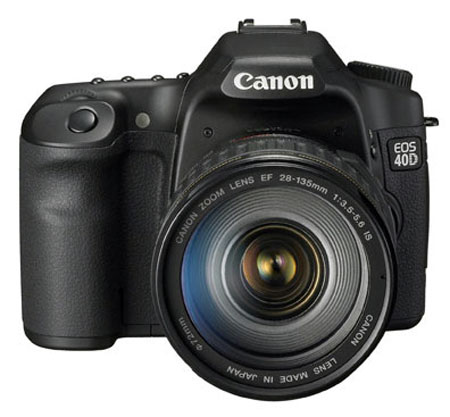
The 10.1MP Canon D40 uses the Canon CMOS sensor. The sensor size is the same as the Canon XS/XTi but the D40 does extend to ISO 3200, unlike the XS/XTi. Therefore all three cameras in this comparison reach from ISO 100 to ISO 3200.
It should not come as a surprise that the performance of the Sony A200 and Nikon D60 are all but the same in these noise tests. They are, after all, essentially the same sensor with different post capture electronics. What may come as a surprise is how very close the CMOS sensor Canon D40 results are to these two entry models. All three cameras capture very usable images with little difference among the results to ISO 1600. It is interesting that sharpening is also similar to ISO 800, but at ISO 1600 the Canon image is softer, which is one of the techniques used to reduce the appearance of noise.
By ISO 3200 the extra softening in the 40D is very apparent, with the consumer Nikon showing the greatest sharpness and the Sony A200 somewhere in between. If we adjust sharpness to comparable levels among the three cameras at ISO 3200 results are very close, but we would not choose any of these cameras at ISO 3200 for large prints, though all should be fine for 4x6 snapshots and small prints.
These results are a testament to how much the DSLR market has evolved in the last couple of years. For a long time Canon CMOS sensors were the clear resolution and low-noise leader in the market. Sony sensors have evolved quite a lot in the meantime and that Canon advantage is no longer so obvious.
The Canon warm Tungsten balance is still obvious. The Nikon colors are very slightly warm but acceptable and the Sony colors appear to be the most neutral is this side-by-side. The Sony A200 results are hard to fault in these JPG crops to ISO 1600, but we still think there is too much "edge-noise" in the Sony at ISO 3200 compared to the Canon or Nikon.
Sony A200 vs. Sony A350 vs. Sony A700 v.4
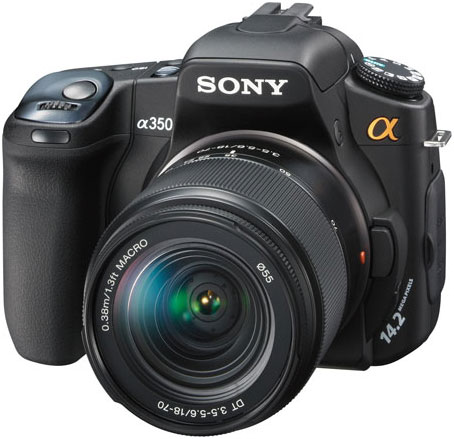
The Sony A200, A350, and A700 models represent the three sensors currently in use in Sony crop-sensor cameras. The A200 is a 10.2MP CCD also used in the Nikon D60 and Pentax K200D cameras. The A350 features an A350 exclusive Sony 14.2MP CCD sensor, and the A700 uses the 12.2MP CMOS sensor also employed in the Nikon D300 and Nikon D90. This group of sensors represents how current Sony crop-sensors compare in JPG noise at various ISO settings. The A700 series uses the latest Version 4 of the Sony firmware that contains many of the improved image quality features of the A900.
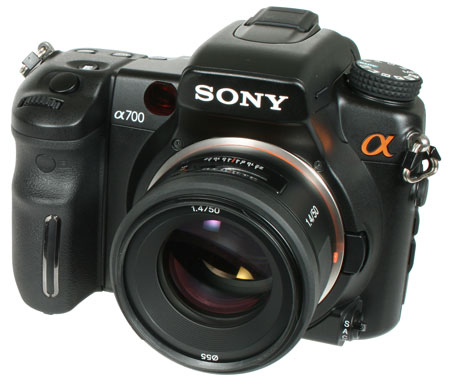
Sony also manufactures the largest digital full-frame sensor available in the 24.6MP Sony A900 that has just recently started shipping. Since that sensor is for a different class of camera (some six times the cost of the A200), it was not included for comparison. We do have both a Sony A900 and a Canon D700 in the lab and we are working on reviews and comparisons of both these full-frame cameras.
The comparisons of the three Sony crop-sensors are arguably the most interesting of all. This is mostly because results show a greater variation among the three sensors than you might expect, since they are all from the same manufacturer. Much praise has been made of the A700 version 4 firmware, which was designed to bring the A700 more closely into competition with the D300. Sony claims they incorporated in version 4 what they learned in developing the pro-targeted A900. Looking at these crops the praise for the v4 Sony A700 certainly appears justified.
At ISO 1600 the A700 is clearly the lowest noise of these three sensors, which is a surprise when you realize we are comparing a 10MP A200 to a 12MP A700. In fact, the A700 ISO 1600 noise is more comparable to the ISO 800 crop from the A200. The A700 ISO 3200 crop is quite like the A200 ISO 1600, which should make images from the A700 v4 quite useful through ISO 3200. Even the ISO 6400 on the A700 v4 is more comparable to 3200 on the 10MP sensor.
The 14.2MP A350 is not similarly blessed in this comparison. It appears to be just as good as the others through about ISO 800, but the ISO 1600 performance is higher in noise than either the A200 or the A700. The A350 ISO 3200 crops shows noise is just too high in that camera at this speed and performance at ISO 3200 will be of very limited usefulness.
Keep in mind that the A700 is the current Sony prosumer model and that it costs more than twice as much as the A200 - and that's just for the body. The A200 performs well compared to other entry models, and Sony A700 fans will be pleased to see that Sony seems to have finally solved their JPG processing issues in version 4 of the A700 firmware. The results here show the A700 v4 is definitely worth the higher price if you are an advanced amateur looking for better image quality and lower noise. If you are looking for an entry-level DSLR, on the other hand, the A200 will do a fine job in both image quality and low-noise in an entry-level camera with more features than most of the competition.
Our Take
If Live View is not an important feature to you then you won't find a DSLR camera that offers more value than the Sony A200. The A200 offers the widest ISO range available in its class and it is definitely not a stripped entry model as you find in much of the competition. The best way to position the A200 is to consider it as an updated, improved, and generally enhanced version of the A100.
For the $499 street price you get a DSLR with a 10.2MP sensor that has been refined over the past two years. Electronics have been updated and AF offers 9 points with a center cross AF point instead of the outdated 3-point AF featured on the Nikon D60 and Olympus E420/E520. You also get a decent, large, bright viewfinder that has the highest magnification in its class. It is definitely not the tunnel viewfinder concession you will find on the Sony A300/A350, which sacrificed the optical viewfinder for a capable Live View system. It is also much better than the Olympus viewfinders in this class and equal or superior to the Nikon/Canon entry models.
Other unexpected features are a pop-up flash that actually can be used as a wireless control flash, unlike the Nikon D60 or any Canon camera, and adjustable Dynamic Range Optimization, which is a decidedly prosumer level feature. There are even options for a battery grip, not available with the D60 or Olympus models, and an optional rigid LCD cover from Sony such as you find on the Nikon D90 and D300 prosumer models.
The A200 is also exceptionally easy to use, with a few simple external controls that belie the sophistication of the actual options available. Notable are an Auto ISO setting that self-adjusts depending on the mode selected and a "program-shift" option with the Command Dial in Program Mode. The A200 also features the extremely useful "Fn" button, which brings up a single menu that can be used for controlling most camera adjustments. It is simple and works well - so well that recent Canon models like the 50D are now offering a similar feature.
This does not mean that the A200 does not make some concessions to price, because it does. The depth-of-field preview is gone from the left side of the lens mount on the A200, and there is just one front Command Dial, although the A100 also had just one dial - in fact you need to move up to the A700 to get two command dials in the Sony line. However, unlike competitors the dropped features are not important items like exposure bracketing (Nikon) or Spot metering (Canon).
In looking at the whole of the entry market, we have to conclude the A200 is a clear best value. There are now 26 Sony lenses available as well as many other reasonably priced Minolta AF lenses that will work very well on the Sony A200. The images you can capture are at least as good as any competitor and the range of image control is considerably better than competitors in the entry-class without compromising ease-of-use. Even the body-integrated IS and auto-sensor cleaning will make it easy to add reasonably priced lenses to your outfit in the future since you won't have to look for the more expensive IS or VR optical stabilized lenses.
Put it all together and you won't find a better value for your $499 than the Sony A200 kit with the 18-70mm kit lens. The kit lens itself even covers a wider 27-105mm equivalent range than competing entry models, which are 18-55mm lenses. This is all predicated on one significant caveat, and that is that the A200 does not have any form of Live View. Personally, we don't fault Sony for this since the Live View on other entry models is more a checklist item than a truly useful feature. The Nikon D60 and Pentax K200D also do not feature Live View, and the other Live View implementations are very slow and only truly useful for situations where you have lots of time to compose and focus - which is definitely not a soccer game or shooting the kids playing.
If Live View is an important feature for you then you definitely need to choose another entry camera like the capable Canon XS. If you want fast Live View our advice would be to move to the Sony A300 at $599 or the A350 at $799. Both feature Sony's unique, fast Live View on a tilt LCD screen and they are both truly useful for shooting sports or kids. Their compromise is a mediocre optical viewfinder, so make sure that is a compromise you are willing to make.

